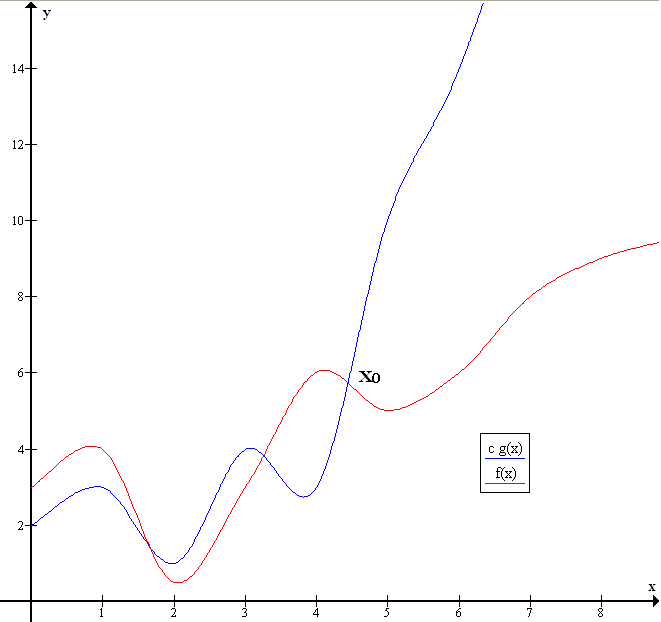|
Dixon's Factorization Method
In number theory, Dixon's factorization method (also Dixon's random squares method or Dixon's algorithm) is a general-purpose integer factorization algorithm; it is the prototypical factor base method. Unlike for other factor base methods, its run-time bound comes with a rigorous proof that does not rely on conjectures about the smoothness properties of the values taken by a polynomial. The algorithm was designed by John D. Dixon, a mathematician at Carleton University, and was published in 1981. Basic idea Dixon's method is based on finding a congruence of squares modulo the integer N which is intended to factor. Fermat's factorization method finds such a congruence by selecting random or pseudo-random ''x'' values and hoping that the integer ''x''2 mod N is a perfect square (in the integers): :x^2\equiv y^2\quad(\hboxN),\qquad x\not\equiv\pm y\quad(\hboxN). For example, if , (by starting at 292, the first number greater than and counting up) the is 256, the squar ... [...More Info...] [...Related Items...] OR: [Wikipedia] [Google] [Baidu] [Amazon] |
Number Theory
Number theory is a branch of pure mathematics devoted primarily to the study of the integers and arithmetic functions. Number theorists study prime numbers as well as the properties of mathematical objects constructed from integers (for example, rational numbers), or defined as generalizations of the integers (for example, algebraic integers). Integers can be considered either in themselves or as solutions to equations (Diophantine geometry). Questions in number theory can often be understood through the study of Complex analysis, analytical objects, such as the Riemann zeta function, that encode properties of the integers, primes or other number-theoretic objects in some fashion (analytic number theory). One may also study real numbers in relation to rational numbers, as for instance how irrational numbers can be approximated by fractions (Diophantine approximation). Number theory is one of the oldest branches of mathematics alongside geometry. One quirk of number theory is ... [...More Info...] [...Related Items...] OR: [Wikipedia] [Google] [Baidu] [Amazon] |
Euclid's Algorithm
In mathematics, the Euclidean algorithm,Some widely used textbooks, such as I. N. Herstein's ''Topics in Algebra'' and Serge Lang's ''Algebra'', use the term "Euclidean algorithm" to refer to Euclidean division or Euclid's algorithm, is an efficient method for computing the greatest common divisor (GCD) of two integers, the largest number that divides them both without a remainder. It is named after the ancient Greek mathematician Euclid, who first described it in his ''Elements'' (). It is an example of an ''algorithm'', a step-by-step procedure for performing a calculation according to well-defined rules, and is one of the oldest algorithms in common use. It can be used to reduce fractions to their simplest form, and is a part of many other number-theoretic and cryptographic calculations. The Euclidean algorithm is based on the principle that the greatest common divisor of two numbers does not change if the larger number is replaced by its difference with the smaller num ... [...More Info...] [...Related Items...] OR: [Wikipedia] [Google] [Baidu] [Amazon] |
L-notation
''L''-notation is an asymptotic notation analogous to big-O notation, denoted as L_n alpha,c/math> for a bound variable n tending to infinity. Like big-O notation, it is usually used to roughly convey the rate of growth of a function, such as the computational complexity of a particular algorithm. Definition It is defined as :L_n alpha,ce^ where ''c'' is a positive constant, and \alpha is a constant 0 \leq \alpha \leq 1. L-notation is used mostly in computational number theory, to express the complexity of algorithms for difficult number theory problems, e.g. sieves for integer factorization and methods for solving discrete logarithms. The benefit of this notation is that it simplifies the analysis of these algorithms. The e^ expresses the dominant term, and the e^ takes care of everything smaller. When \alpha is 0, then :L_n alpha,c= L_n , c= e^ = (\ln n)^\, is a polylogarithmic function (a polynomial function of ln ''n''); When \alpha is 1 then :L_n alpha,c= ... [...More Info...] [...Related Items...] OR: [Wikipedia] [Google] [Baidu] [Amazon] |
Big-O Notation
Big ''O'' notation is a mathematical notation that describes the limiting behavior of a function when the argument tends towards a particular value or infinity. Big O is a member of a family of notations invented by German mathematicians Paul Bachmann, Edmund Landau, and others, collectively called Bachmann–Landau notation or asymptotic notation. The letter O was chosen by Bachmann to stand for ''Ordnung'', meaning the order of approximation. In computer science, big O notation is used to classify algorithms according to how their run time or space requirements grow as the input size grows. In analytic number theory, big O notation is often used to express a bound on the difference between an arithmetical function and a better understood approximation; one well-known example is the remainder term in the prime number theorem. Big O notation is also used in many other fields to provide similar estimates. Big O notation characterizes functions according to their growth ... [...More Info...] [...Related Items...] OR: [Wikipedia] [Google] [Baidu] [Amazon] |

